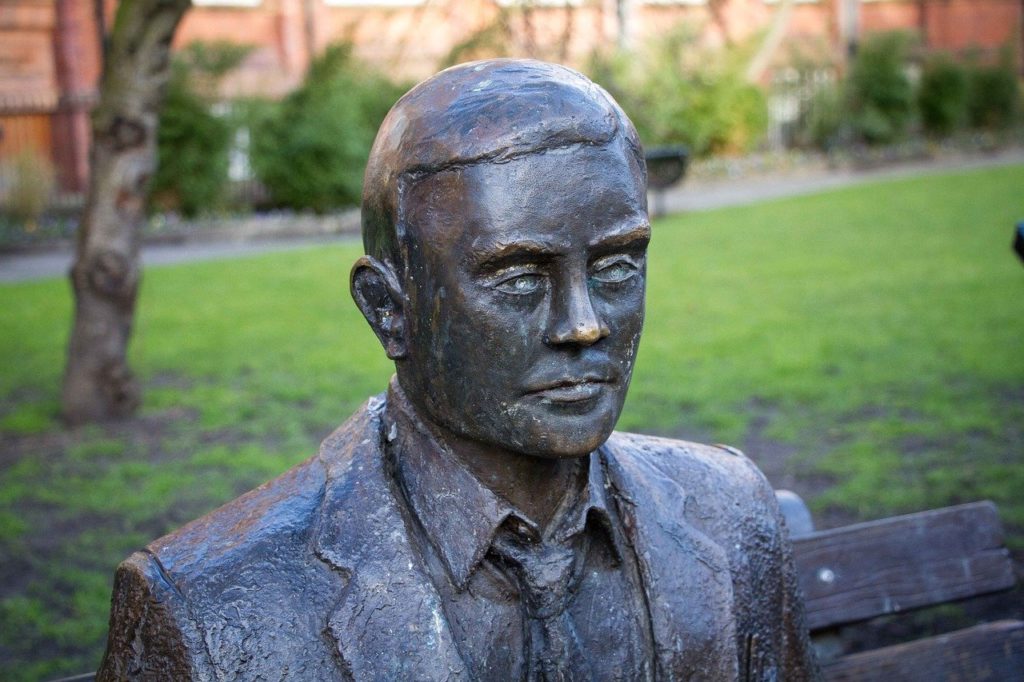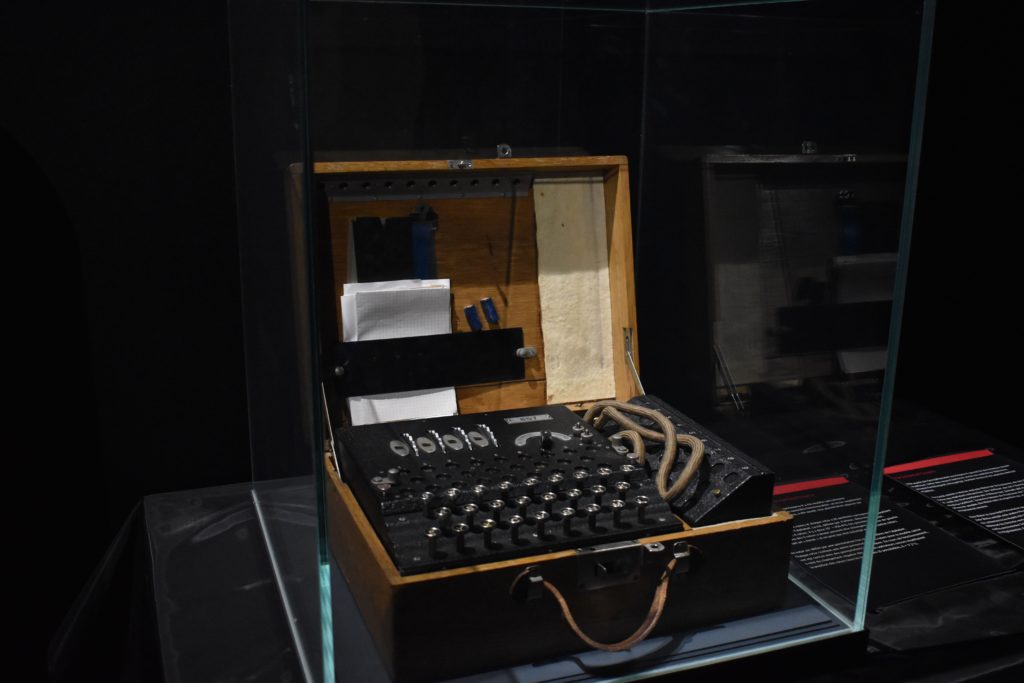Welcome to our fourth Pivotal Moments blog. If you follow us on social media, you’ll know what this is all about. To paraphrase Confucius, it’s only by knowing where we’ve been that we can know where we’re going.
“Study the past, if you would divine the future.”
Confucius
Most of us have heard of Alan Turing. If you’ve not seen The Imitation Game with Benedict Cumberbatch, then you may well have been hiding under a rock. But who was Alan Turing?
The Turing Machine is likely the first thing that comes to mind. Maybe you’ve got a vague idea about code breakers in WWII? You’re not far off. But the two are important for separate reasons, and about as complicated as the man himself was.
Still, Turing’s contributions to computer science have changed the way we live our lives. And in ways that he would likely never have imagined.
Early Life
Born on the 23rd June 1912, Alan Turing was the son of a civil servant, and received his education at a high-ranking private school. In 1931, he began studying mathematics at King’s College at the University of Cambridge. In 1934, they elected him to a fellowship in recognition of his probability theory research.
The Pivotal Moment – Turing’s ‘Problem’

Turing’s pivotal life moment came early on. Aged 24, he published a seminal paper, “On Computable Numbers, with an Application to the Entscheidungsproblem”. A bit of a mouthful, right?
The translation of the German is “Decision Problem”. Soon enough, an established scholar from the US, Alonzo Church, recommended this paper for publication. Turing’s paper followed a different method to that of Church, but reached the same conclusion as he had.
The Problem sought an effective method for solving a fundamental mathematical problem. It looked to determine exactly which mathematical statements are provable, within a formal mathematical system. And of course, which are not.
That might sound like serious mathematical jargon, but the conclusion that both Turing and Church reached (independently) was that there was no resolution. This meant that there was no possibility of a formal system that would reduce all of mathematics to methods that human “computers” could carry out.
Turing’s paper had a profound effect on the emerging science that was computing. It was during his work on the Problem that Turing invented the computing machine that became the forerunner of the modern digital computer. What he called the “a-machine”, and you might know as the Turing Machine.
The Turing Machine
Though we’ve covered our Pivotal Moment for today, Alan Turing’s impact stretches far beyond this one crucial moment alone.
Turing’s argument about the Decision Problem was that the Turing Machine could also compute everything that was humanly computable. Importantly, it set limits on what could be done with human computation.
A Turing Machine, he theorised, was an abstract computing device that’s equipped with an infinitely long memory tape. The tape stored symbols, and a device on the machine could read and write, or modify symbols on that tape. The machine could also hold information about the state of the machine, and had a set of rules that described what the machine should do based on that state and what it read.
If that sounds complicated, then think of it like this…
The fundamental concept of the design was that it had a stored programme, where rules for computing were stored in memory. With enough rules on a Turing Machine, it would be theoretically possible to build anything. With enough rules, you could build anything from a browser to a video game – though it would be incredibly inefficient.
The Turing Machine was ground-breaking because of its simplicity. Because it was clear about what it could and could not compute, it is still considered to be the most powerful machine in the world.
These days, any modern computing system that is as powerful is referred to as Turing complete. Literally anything – including your smartphone, your FitBit and even your microwave. The world of computers and the age of digital marketing simply would not exist as we know it without this man.
Code Breaking & Bletchley Park

Turing being the genius that he was, he carried on changing the world. At the outbreak of the war with Germany in 1939, he presented himself at the Government Code and Cypher School’s headquarters in the famous Bletchley Park.
British mathematicians-cryptanalysts had already successfully cracked the German cipher machine, Enigma. But their method relied on certain German operating procedures. When those procedures changed in May 1940, their code-breaking machine, “Bomba” became useless.
With Turing on the case, he was able to design a new but very different code-breaking machine. Known as the “Bombe”, it successfully supplied the Allied Forces with huge amounts of useful military intelligence.
Turing went on to devise a systematic method for breaking down encrypted German messages created by the German cipher machine referred to as “Tunny”. This led to Turing being made an Officer of the Most Excellent Order of the British Empire (OBE).
In 1951, he was honoured with an election as a fellow of the Royal Society of London. But a year later, was convicted of “gross indecency” for the then-crime of homosexuality. The courts sentenced him to hormone “therapy” that equated to chemical castration, and since Turing now had a criminal record, was no longer able to work for GCHQ.
Why is Turing Still Important Today?
Though Turing was a genius that was grossly victimised during his lifetime, his work remains important. It’s undeniable that he is the founding father of modern cognitive science and artificial intelligence. Plus, he was an early supporter of the hypothesis that the human brain is pretty much a large, digital computing machine.
Turing continued to make breakthroughs, even after being wrongfully disgraced and barred from continuing his code-breaking work.
After the war, he designed the first complete specification of an electronic stored-program all-purpose digital computer, known as the Automatic Computing Engine (ACE). He then went on to write the first programming manual. His system was later used in the first commercially marketable electronic digital computer, the Ferranti Mark I in 1951. Without his achievements, computer science would not be what it is today.